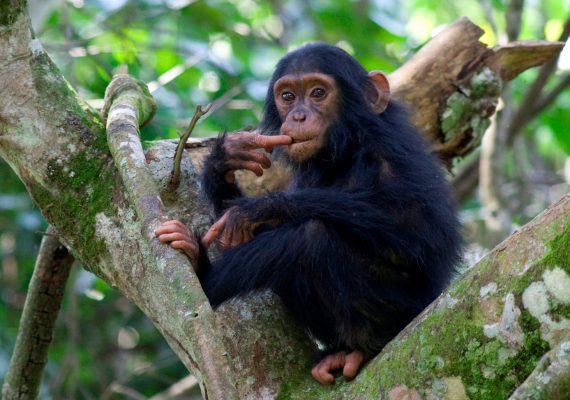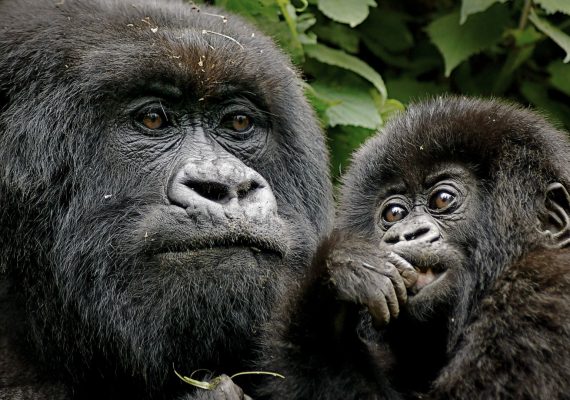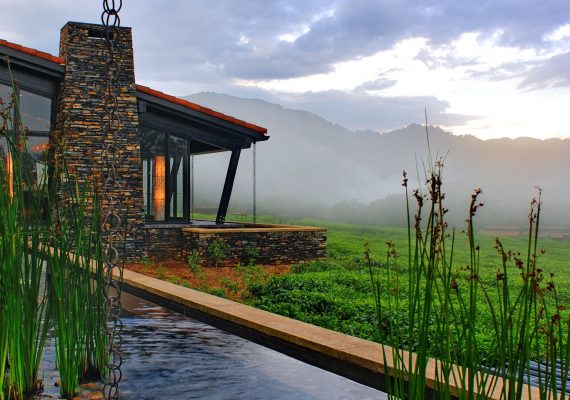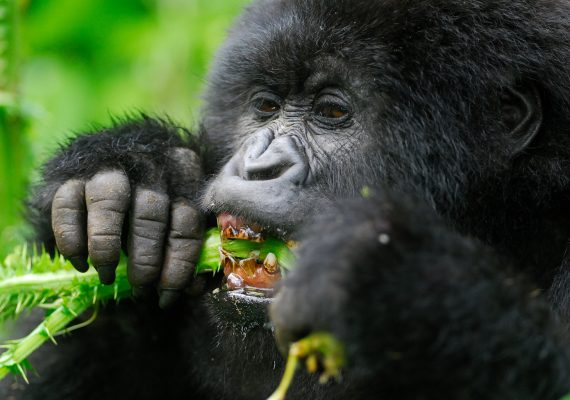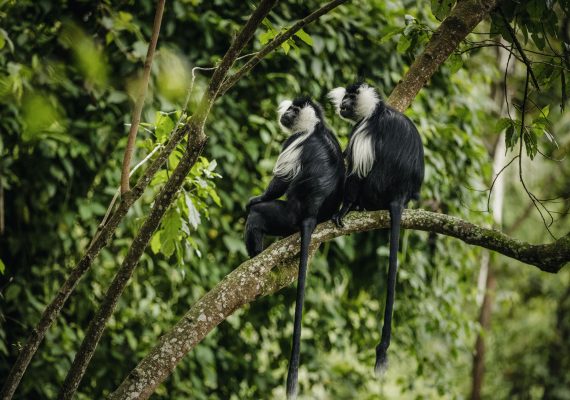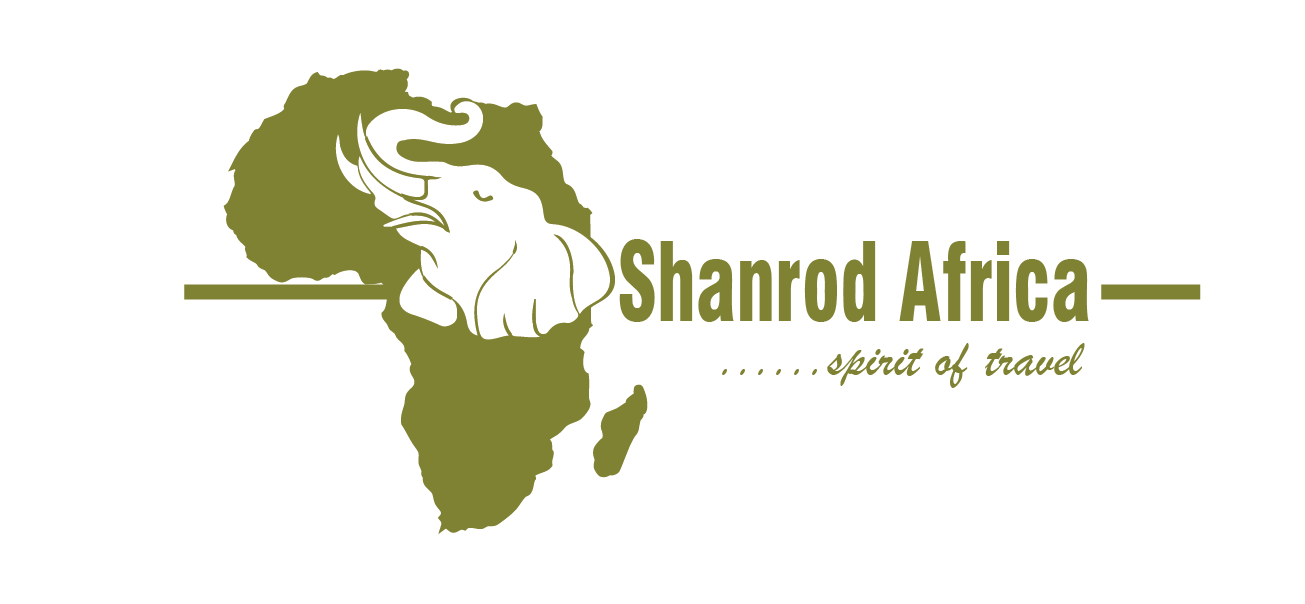Akagera National Park is located in the north-east of Rwanda, on the Tanzanian and Ugandan borders. It now covers an area of 100,000 ha, following a recent reduction of its original size of 250,000 ha. Gazetted as a National Park in 1934, Akagera National Park is among the oldest national parks in Africa.
The excised areas are mainly from the eastern and northern parts of the park’s original limits. The park was contiguous to the north-west with the Mutara Hunting Reserve (34,000 ha), degazetted in 1997. The topography of the park is characterized by rolling sandstone hills in the west, cut in places by deep, narrow valleys. In the east, flood-plains and swamps are predominant. The extensive lakes and swamps of Akagera river valley cover an area of 100,000 ha. The highest point in the park is Mount Mutumba (1,825 m). The vegetation of the park is extremely varied and, indeed, has been described as the most heterogeneous savanna ecosystem in the region. Open savannas are dominated by three typical grasses, Red oat grass, Fine thatching grass (Hyparrhenia filipendula) and lemongrass (Cymbopogon afronardus). Though Acacia spp. and Combretum spp. predominate, more than 250 tree species occur in the park. The relatively steep hills of central and southern parts support a denser tree- and bush-cover. Towards the lake borders to the east, the savanna becomes more heavily wooded, with gallery forest occurring along lake edges. Gallery forest species include Albizia spp., Acacia polyacantha and some Ficus spp. Flood-plain and marsh vegetation occur in the river valley, with marshes dominated by Papyrus (Cyperus papyrus), Cladium and Miscanthidium.
However due to the turmoil in Rwanda the activities in the park came to a standstill and there was no activity at all. While peace was finally restored in the 1990s after the 1994 Genocide against Tutsis, Akagera’s demise was just beginning. Due to the struggle for survival of the returnees into Rwanda, they turned to the forests for timber, wildlife for protein and the wild savannahs for their livestock. Lions were hunted to local extinction, rhinos disappeared, and the park’s wildlife was displaced by tens of thousands of long-horned cattle.
There has been efforts to restore the park back to its former glory and this has seen historic return of 18 Eastern black rhinoceros after a 10-year absence as well as lions reintroduced.
Akagera National Park’s rolling highlands, savannah plains, and swamp-fringed lakes make up one of the largest protected wetlands in central Africa and the last remaining refuge for savannah-adapted animals and plants in Rwanda. The park is relatively small in size with just 1,122 km² but it is home to an impressive array of wildlife, including some rare species such as the shoebill and sitatunga
The diverse vegetation types and conducive climate, give Akagera an advantage of having many activities including game drives, nature walks, boat cruise, birding among others.
At least 525 bird species are known from the park, reflecting the extremely wide diversity of habitat. These include 44 species of raptor, shoebilI (Balaeniceps rex) and many Palearctic migrants, amongst which lesser kestrel (Falco naumanni), great snipe (Gallinago media) and black-winged pratincole (Glareola nordmann)i have been recorded. The park represents the northern limit of distribution of a number of Zambezian biome species, including Souza’s Shrike (Lanius souzae), Arnot’s Chat (Myrmecocichla arnotti) and Tabora Cisticola (Cisticola angusticauda). In addition, one species of the Guinea–Congo Forests biome and seven of the Afrotropical Highlands biome also occur. However, all these data need to be reviewed in the light of the recent reduction in size of the park, which means that some species are no longer likely to occur within it, e.g. species of gallery forests (e.g. Olive-green Camaroptera (Camaroptera chloronota), Blue-shouldered Robin-chat (Cossypha cyanocampter) and montane forests e.g. Mountain Illadopsis (Illadopsis pyrrhoptera), Chubb’s Cisticola (Cisticola chubbi).
More than 50 species of mammal are known from the park, including Lycaon pictus, now thought to be locally extinct. Diceros bicornis and Loxodonta africana were introduced to the park in 1958 and 1975 respectively.
Popular Rwanda Safaris

